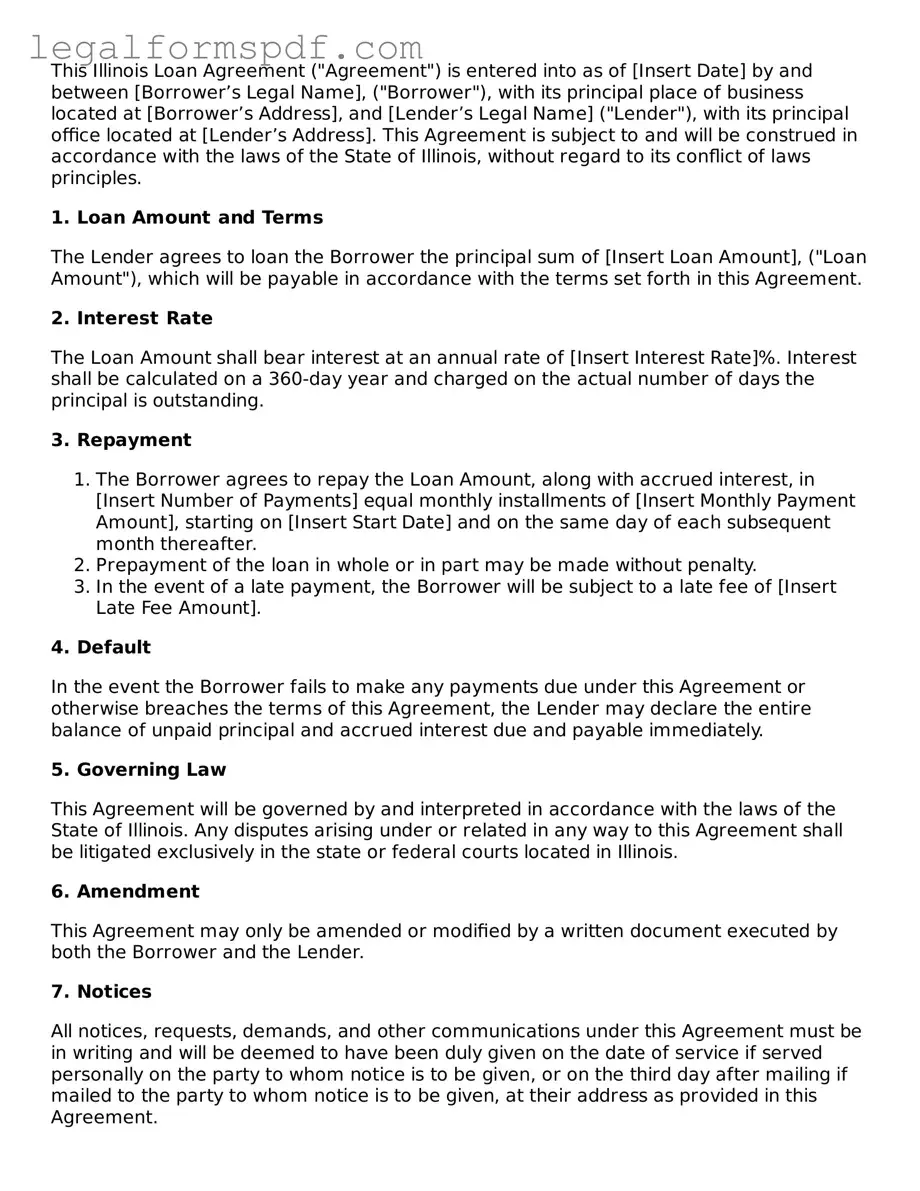What is an Illinois Loan Agreement form?
An Illinois Loan Agreement form is a legal document that outlines the terms and conditions under which money is lent. This agreement is established between a borrower, who takes the loan, and a lender, who provides the loan. The form typically details the loan amount, interest rate, repayment schedule, and any other terms pertinent to the loan arrangement. It serves to protect both parties' interests and ensure clear communication regarding the loan's expectations.
Who needs to use an Illinois Loan Agreement form?
Any individual or entity within Illinois planning to either lend or borrow money may need to use this form. This includes personal loans between family members or friends, as well as business loans provided to or by a company. Using a formal agreement clarifies the responsibilities and expectations of both the lender and the borrower, minimizing potential misunderstandings or disputes.
How legally binding is the Illinois Loan Agreement form?
Once duly signed by both the lender and borrower, the Illinois Loan Agreement form becomes a legally binding document. This means that both parties are legally obligated to adhere to the terms set forth in the agreement. In the event of a dispute, the agreement can be used as evidence in a court of law to enforce terms or claim damages.
What information is required to complete the form?
To complete the Illinois Loan Agreement form, you will need to provide detailed information including the identities of the lender and the borrower, the loan amount, the interest rate, the repayment schedule, security or collateral (if any), and any other specific conditions or covenants relevant to the loan. Both parties should also provide their signatures and the date of signing to validate the agreement.
Are there any specific requirements for the interest rate mentioned in the form?
Yes, the interest rate specified in the Illinois Loan Agreement must comply with Illinois state laws regarding usury. This means that the interest rate must not exceed the maximum rate allowed by law. It's important to check the current legal interest rate to ensure compliance and avoid the agreement being considered void or unenforceable because of usury laws.
What happens if a borrower fails to repay according to the agreed terms?
If a borrower fails to make repayments as laid out in the agreement, the lender has the right to take legal action based on the terms specified for default. This could include initiating a lawsuit to recover the unpaid loan amount and any applicable interest or taking possession of collateral if the loan is secured. The specific course of action depends on the terms outlined in the agreement and Illinois state laws.
Can the Illinois Loan Agreement form be modified after signing?
Yes, modifications to the Illinois Loan Agreement can be made after it has been signed, but any changes require the written consent of both the lender and the borrower. The modification should be documented in a written amendment to the original agreement, clearly stating the changes and signed by both parties to be legally valid.
Is a witness or notarization required for the agreement to be valid?
While not always a legal requirement, having the Illinois Loan Agreement notarized or witnessed can add an extra layer of validity and may help in the enforcement of the document. Notarization can help prove the identity of the parties and that they signed the document voluntarily. However, it's advisable to consult with a legal professional to understand the specific requirements for your situation.
How can I ensure that my Illinois Loan Agreement is enforceable?
To ensure that your Illinois Loan Agreement is enforceable, make sure that all information provided in the form is accurate and complete, the interest rate is in compliance with state laws, both parties willingly sign the agreement without coercion, and all legal requirements, such as notarization (if required), are fulfilled. It's often advisable to seek legal advice to verify that all aspects of your agreement comply with Illinois laws and to address any specific concerns or questions.
